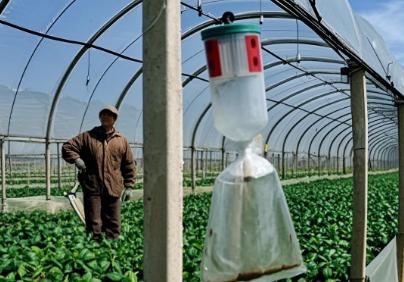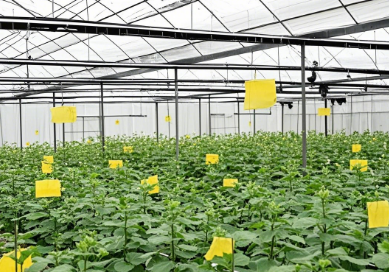Hey there, green thumbs and greenhouse aficionados! If you're looking for a natural and effective way to keep pests at bay in your greenhouse, you've come to the right place. Biological pest control is a game-changer, and I'm here to walk you through how to make it work wonders for your plants.
Understand the Basics of Biological Pest Control
Biological pest control is all about using living organisms to manage pests. Instead of relying on chemicals, you introduce beneficial insects, microorganisms, or other natural predators that target the pests harming your plants. This method is not only eco-friendly but also sustainable in the long run.
Identify Common Greenhouse Pests
Before you can tackle the problem, you need to know your enemies. Common greenhouse pests include aphids, whiteflies, spider mites, and fungus gnats. Each of these pests has its own set of predators that can be used for control.

Introduce Beneficial Insects
One of the most effective ways to control pests is by introducing beneficial insects. For example, ladybugs are fantastic at eating aphids. A single ladybug can consume hundreds of aphids in its lifetime. Similarly, predatory mites can help control spider mites, and lacewings are great for dealing with whiteflies.
Use Microorganisms to Your Advantage
Microorganisms like Bacillus thuringiensis (Bt) are excellent for controlling caterpillars and other soft-bodied insects. Bt is a naturally occurring bacteria that is safe for humans and the environment but deadly to specific pests. Another example is Beauveria bassiana, a fungus that infects and kills insects like thrips and whiteflies.
Create a Welcoming Environment for Beneficial Insects
To make the most of biological pest control, you need to create an environment where beneficial insects can thrive. This means providing them with food and shelter. Planting flowers like marigolds, dill, and fennel can attract ladybugs and other beneficial insects. These plants provide nectar and pollen, which are essential food sources for many beneficial insects.
Monitor and Adjust
Biological pest control isn't a set-it-and-forget-it solution. You need to monitor your greenhouse regularly to see how well the beneficial insects are doing their job. Keep an eye on pest populations and be ready to introduce more beneficial insects if needed. Sometimes, it might take a few tries to get the balance right, but the effort is worth it.
Combine Methods for Best Results
While biological pest control is highly effective, combining it with other methods can give you even better results. For example, using physical barriers like insect netting can prevent pests from entering your greenhouse in the first place. This reduces the number of pests that beneficial insects have to deal with.
Stay Informed and Educated
The world of biological pest control is constantly evolving. Stay updated with the latest research and techniques by reading gardening magazines, joining online forums, or attending workshops. The more you know, the better equipped you'll be to protect your plants.

Biological pest control is a smart and sustainable way to manage pests in your greenhouse. By understanding your pests, introducing beneficial insects, and creating a supportive environment, you can keep your plants healthy and thriving. So, why not give it a try? Your plants – and the planet – will thank you.
Welcome to have a further discussion with us.
Phone: +86 15308222514
Email: Rita@cfgreenhouse.com
Post time: Jun-20-2025







 Click to Chat
Click to Chat